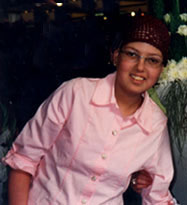Second year – Living with the Loss: How are the Bereaved able to Continue Living their Lives? (2nd Yartzeit)

2nd Yartzeit – Living with the Loss – JewishClarity.com
The Gemara Baba Batra (60b) tells us:
When the second Beit HaMikdash (Temple) was destroyed, perushim (ascetics) increased within Israel. They would no longer eat meat and they would no longer drink wine. Rebbe Yehoshua addressed them and said, “My sons, why are you no longer eating meat, and why are you no longer drinking wine?” They replied to him, “How can we eat meat that was once offered on the altar which is now destroyed? How can we drink wine that was once offered on the altar which is now destroyed?” He responded, “If so, you should no longer eat bread, since the menachot (bread offerings) have also stopped!” They answered, “If so, we will survive with fruits.” Rebbe Yehoshua countered, “You should also not eat fruits, since there are no longer the bikurim (first fruits)!” They replied, “We will even be able [to survive] with other fruits.” He finally said to them, “You shouldn’t even drink water, since the nisuch hamayim (water offerings) have also been eliminated!” They were silent.
He then said to them, “My sons, come and I will tell you something. To not mourn at all would be impossible, since some mourning has been decreed; and to mourn excessively is also impossible, since we decree upon the congregation only what the majority can withstand… Therefore, the Sages [simply] said: One should plaster (or paint) his house [normally] and leave over just a small [unfinished] area — one square amah — opposite the doorway. Prepare a festive meal as nicely as you want and leave out just one small dish. A woman may wear whatever jewelry [she wants] except that she should leave out one small item. This is all based on the verse, “If I forget Yerushalayim (Jerusalem), my right hand should forget [its ability], and my tongue should cleave to my palate…” All those who mourn for Yerushalayim should merit to see it [rebuilt] in simcha.
Rarely have I felt a gemara speak so directly and so personally to me. As I have now arrived at the second yartzeit of my daughter, Ruchama Rivka, a”h, my question parallels that of the gemara — How can I continue to live after my personal “churban” (destruction) of losing a child? The gemara expressed this so well — To refrain from mourning at all is impossible, and to mourn excessively is also impossible.
The life of a mourner is filled with contradictions. He or she attends celebrations and celebrates the chagim (holidays), but those are often the most painful times of all for them. They have now rejoined society but feel separate from most of those around them. They enjoy the various pleasures of life while at the same time feeling an overall sadness. They feel an extraordinary attachment and closeness to their deceased relatives all throughout their day, while at the same time they are painfully aware of the enormous distance that separates them from the deceased.
I remember that just before Shabbat, at the very end of our shiva, my wife got a phone call from Rebbitzen Karlinsky, one of her teachers. Rebbitzen Karlinsky told her that the Jewish people have a mesorah (tradition) that once the deceased leaves this world, he or she begs for the family to find true nechamah. This was one of the most helpful insights we received during the entire shiva. In particular, it addressed the normal feelings of guilt that the bereaved often feel when beginning to live life normally once again.
How is a mourner able to successfully rejoin life and the world around him? I now have a deeper understanding of why every mourner is told, “HaMakom yenacheim eschem b’soch sha’ar aveilei Tzion v’Yerushalayim — G-d (referred to as “The Place”) should comfort you among the other mourners of Tzion and Yerushalayim.” Recognizing ourselves as members of the Jewish nation and as part of Jewish history can help us to navigate these numerous contradictions in our lives.
The Jewish people have actually been managing to do this for thousands of years, beginning with the two different destructions of the Beit HaMikdash (Temple) and through all of the terrible pogroms, persecutions and anti-Semitism that we have had to deal with ever since then. Throughout all of these difficulties and challenges, Jews always continued to live their lives. They enjoyed celebrations, observed chagim, and remained connected to their communities. As impossible as it may seem to find the proper balance between the conflicting emotions that fill our lives, we have the model of the Jewish people throughout all of the many generations showing us that it can and must be done.
While there is a strong parallel between every personal loss and the churban (destruction of the Temple), we felt it even more strongly with Ruchama Rivka who passed away on yud tet Tammuz, the very beginning of the three week period of mourning for the Beit HaMikdash.
HaKadosh Boruch Hu should hasten the geulah (redemption), rebuild the Beit HaMikdash, and fulfill the plea of Ruchama Rivka along with all of the other niftarim (deceased) to grant a true nechamah to all of us who have lost our precious loved ones.
This should be l’zechut ul’illuy nishmat Ruchama Rivka, a”h, bat Asher Zevulun


Rabbi Resnick, I find this article truly helpful for me. My son passed away at age 24. His first yarhtzeit is coming and I’m dreading it, especially going to the cemetery. I keep asking myself if I’ll ever find joy again. Maybe with time, and if I can internalize the concepts you present so beautifully in your article.